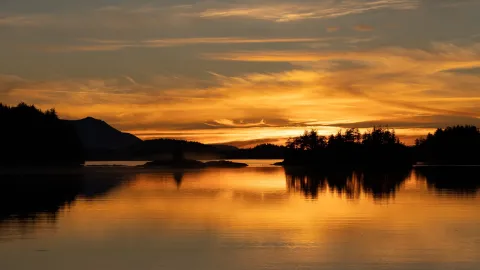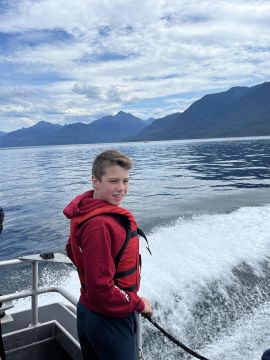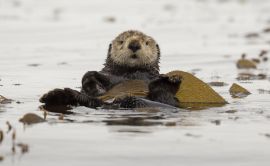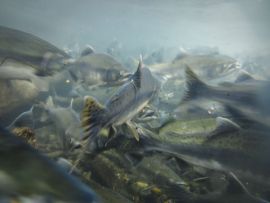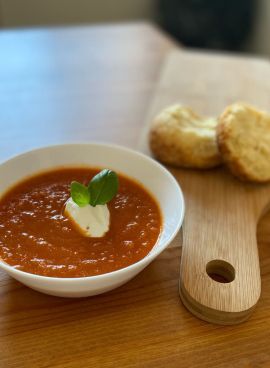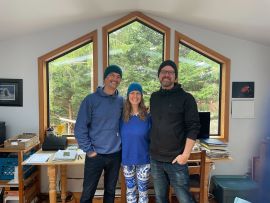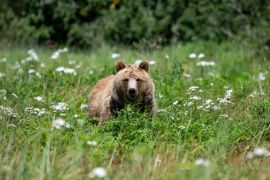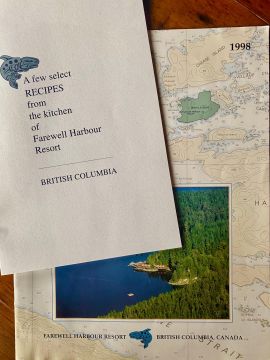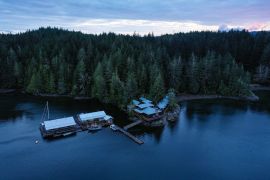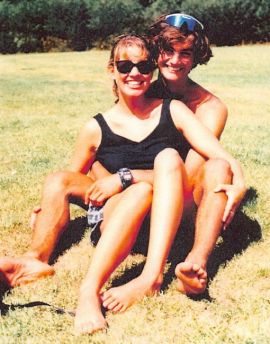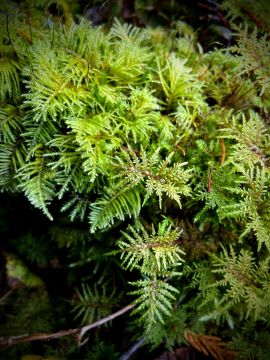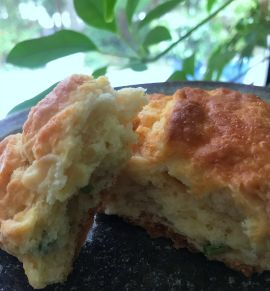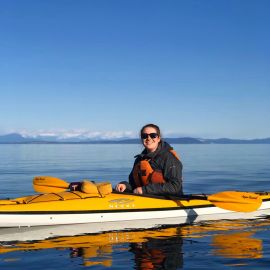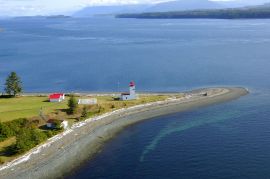Wild Pacific Salmon Ecology
Pacific wild salmon spend their lives travelling great distances across several different types of ecosystems. Because of this range, their presence influences not only one area but the entirety of British Columbia’s coastal ecosystem. This influence ranges from vast branching river systems to the open ocean, and their life cycle leads them along this miraculous and precise journey. So precise, in fact, that scientists still find some elements of their life cycle remarkable and mysterious.There are five species of salmon native to the Pacific Ocean, including Pink, Sockeye, Coho, Chum, and Chinook. The life span of each of these species varies significantly, from two to seven years. While their life cycles differ in some regards, they all share a similar journey. This journey begins tucked away underneath the gravel of a riverbed, where the salmon eggs are protected from predators. The female dug this nest, called a redd, before she laid the eggs and covered them again with gravel. The tiny eggs are filled with a supply of nutrients and oxygen to keep the salmon healthy. When the oxygen supply is emptied, the embryo will break open the egg and begin obtaining oxygen from the river water. At this stage, it is called an alevin. The alevins are mobile but still under the protection of the riverbed gravel, and they still have a yolk sac attached to their underbelly from which they absorb nutrients.
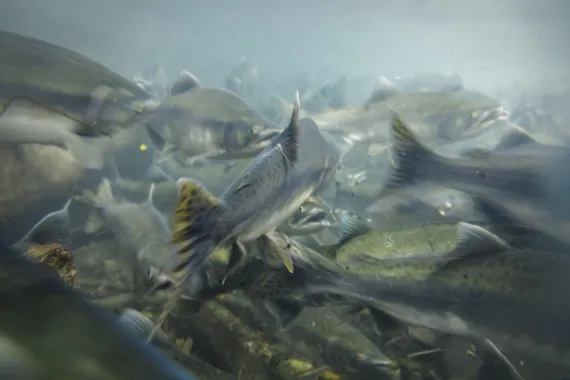
Photo by: Boomer Jerritt
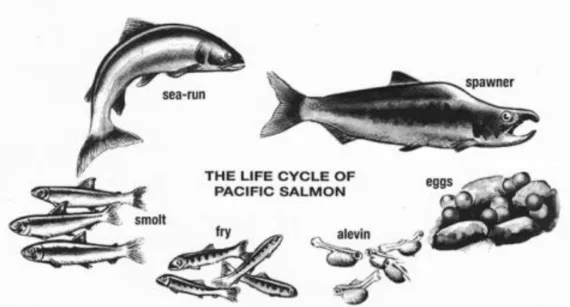
When the smolts free themselves into the open ocean, they’re considered juvenile salmon. The amount of time they spend in the saltwater depends on several variables, including their species, the ocean conditions, and their age when entering the marine environment. During this extensive journey in the Pacific Ocean, they feed on small fish such as herring, shrimp, plankton and even crab. When they’ve completed their long migration, which can consist of thousands of kilometres, they’re considered mature adults. At this time, the salmon will return to their natal streams to spawn. This instinct referred to as “homing” is not well understood and carries some mystery because the spawning salmon often return to the very same gravel bed in which they were laid as eggs. Leading hypotheses to explain this phenomenon include a combination of genetic coding, celestial navigation, electromagnetic currents, and a strong sense of smell. However, for now, at least, scientists are still scratching their heads.
While the mature, spawning salmon persevere upstream, through rapids and past log jams, back to their spawning grounds, they stop eating and instead use stored energy reserves. Their bodies also change colour to a deep pinkish-red to make themselves more visible and indicate that they’re ready to spawn. The females dig a redd in the gravel and lay their eggs for a male to fertilize before covering them again with gravel to keep them safe from predators. The cycle starts over again when those eggs develop and mature into alevins.
As their life cycle takes salmon on a journey throughout the whole coastal ecosystem, many other animals come to depend on salmon for their food. Among the most well-known animals are Black bears, Grizzly bears, American Bald Eagles, Orcas, Seals and Sea Lions. Since these top predators come from various walks of life, they also target salmon at different stages of their life cycle. Marine mammals catch salmon along their migration route in the open ocean, and terrestrial predators focus on the river systems. Bald eagles often target the river estuaries, feeding on salmon at various stages of their life cycle.
At Farewell Harbour Lodge, located in the beautiful and vast Great Bear Rainforest, we most commonly see salmon as they’re returning to their spawning grounds in various river systems. Our excursions generally take us to these areas in search of Grizzly bears, and it is certainly not a coincidence that these two species are found close to each other. The season for salmon to return to their spawning grounds is late Summer and Autumn, just as Grizzly bears are preparing for their annual Winter denning. Grizzlies need to have large stores of nutrients and fats to last them through their Winter denning until the Spring. Most of these stored nutrients come from energy-rich sources, primarily salmon. Recent studies have shown that bears can kill more than 70% of the salmon population in small streams, causing such a significant hit that salmon have evolved differently in rivers that are easily accessible to bears. For example, the spawning salmon tend to be younger, shorter, and less deep-bodied in these areas, making them more manoeuvrable in shallow waters and less visible. Scientists have also found that the salmon spawn sooner upon arriving at their spawning grounds to lower predation risk before they can reproduce. These changes show the significant impact that bears have had on the evolution of salmon and the inherent link between these two species.
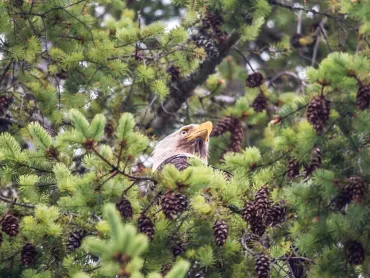
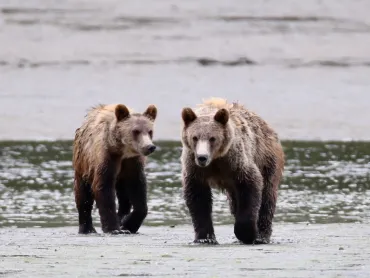
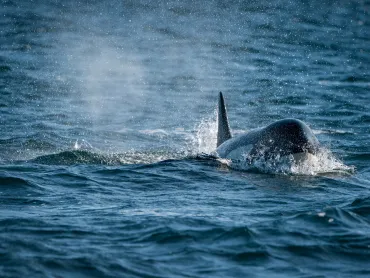
Not only is salmon depended on as a food source, but they’re also depended on for the cycling of nutrients throughout the ecosystem. Salmon move rich nutrients that they’ve gathered on their long ocean migrations, up river systems and into terrestrial ecosystems. This constant exchange of nutrients between two different environments (sometimes called a “conveyor belt”) is a unique phenomenon that benefits organisms of all kinds. When mature adult salmon have spawned, they start to die and deteriorate in that same area within days. They end up washing up on riverbanks by the thousands, providing food to numerous other terrestrial vertebrate and invertebrate species. Even if the salmon carcass ends up not getting completely eaten, those nutrients get digested by decomposers, which eventually turns the carcass into new, rich soil. This soil will help germinate seeds and nurture new plant growth around the river, leading to a healthier ecosystem. Recent research shows that bears eat as little as 25% of the carcass, prioritizing the nutrient-rich parts of the fish. The rest is left for other scavengers to feed on or to be recycled as nutrients in the soil. Birds also carry salmon carcasses or scraps from the riverbanks to their nests, spreading this rich nutrient source even further throughout the ecosystem.
While salmon provide an essential dose of nutrients to many species and entire river systems, unfortunately, there isn’t a high degree of consistency in population numbers. Year to year, the number of mature adults returning to spawn can vary greatly, which puts pressure on other animals higher up the food chain. This variability is multifactorial and could be due to changing marine conditions, food availability or fishing activity in that given year. Alternatively, the variability could stem from the year in which the salmon were eggs. For example, if there was a drought year and the water level of a river dropped below most of the redds laying in the streambed, that year’s group of offspring would be very low, affecting the number of returning salmon in the next 2-7 years.
This variance from year to year is natural. However, researchers have recorded significant declines in salmon populations even accounting for this natural variance. Several factors could be causing this decline including warming oceans, habitat loss, over-harvesting, sea lice or other pathogens. The graphs below show population data for Pink salmon in three major river systems in the areas surrounding Farewell Harbour. This data was compiled by the Department of Fisheries and Oceans Canada, and although there are some gaps (2015-2018), the overall variability and decline is noticeable. Fisheries and Oceans Canada scientists believe the ocean survival is improving and they are expecting much better returns in 2022.
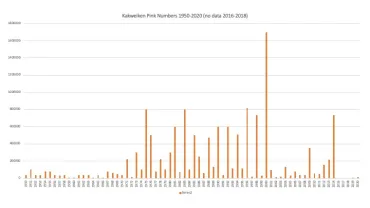
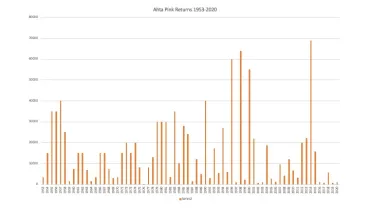
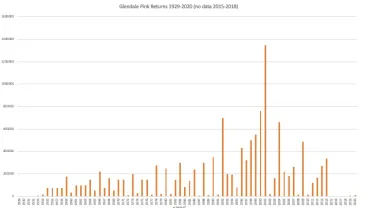
Despite salmon population variabilities and declines, this issue is now widely known and increasingly studied. Scientists are dedicating their careers to learning more about these crucial populations, and local Indigenous groups are beginning to direct conservation efforts. Therefore, it is important to recognize and share how valuable salmon are to us and to the health of all parts of the ecosystem. If you want to learn more about the story of Pacific wild salmon, there are plenty of valuable sources available, including the peer-reviewed articles listed below.
--Sylvie Stewart-Grantham
Sources:
Levi et al., (2020) Community Ecology and Conservation of Bear-Salmon Ecosystems. Frontiers in Ecology and Evolution.
Schindler et al., (2003) Pacific salmon and the ecology of coastal ecosystems. Frontiers in Ecology and Evolution.
NuSEDS - New Salmon Escapement Database System
